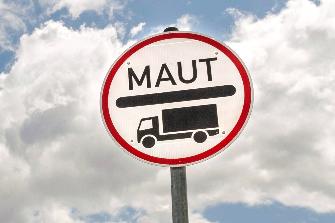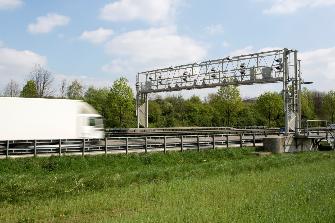Enforcement
-
If the toll is not deducted properly, it will be subsequently collected in a retroactive collection procedure. You will receive a written notification.
-
The toll for the routes that were actually travelled will be subsequently collected.
If the actual routes travelled cannot be established, the toll is collected at a flat rate for a distance of 500 km per journey.
If the number of axles or weight is set incorrectly in the on-board unit (OBU), the difference of the amount from the toll already paid will be subsequently collected.
If the emission class or CO₂ emission class is incorrectly stored in the On-Board Unit (OBU), Toll Collect will request the vehicle's registration certificate (vehicle registration document) for clarification.
You will receive a notification in each case.
-
Hearing and post-collection
There can be various reasons for this. You can find all the information on this page:
-
You can reply to the letter you have received within 14 days using the reply form. Please fill out the form and send the requested evidence to Toll Collect.
-
Please enter in the reply form:
- the data for towing vehicle and trailer (if any)
- the route travelled within Germany
- different party liable for toll (if any)
- Driver information
-
Information on toll-exempt vehicles
If you drive a toll-exempt vehicle, please submit evidence of this to us. The evidence that is required is stated on the back of the letter.
-
Transfer the amount specified to the Federal Logistics and Mobility Office (BALM) within seven days of notification. You must specify the transaction number (Kassenzeichen) when doing this. This can be found on the first page of the notification.
If you do not agree with the notification, you can lodge a signed objection with Toll Collect within one month of receiving the notification.
-
Overview of the forms of enforcement
The task of enforcing the toll requirement is split between Federal Logistics and Mobility Office (BALM). Toll Collect is responsible for automatic enforcement. This responsibility also includes recovery of toll in the case of toll non-payment or incorrect toll payment. This official task was assigned to Toll Collect by the German Federal Government.
All further enforcement is carried out by the BALM.
-
The automatic enforcement gantries span the whole carriageway. As a vehicle drives through them, they identify whether it is subject to toll and whether the toll has been paid correctly. Every vehicle that approaches an enforcement gantry is recorded by a detection and tracking device. The lane and exact time that the vehicle passes through the gantry are recorded so as to allow precise classification. In addition, a licence plate and overview picture is taken.
A three-dimensional scan is made when a vehicle passes through the gantry, which determines whether it is subject to toll, This means that it is checked whether it has a Technically Permissible Maximum Laden Mass of at least 7.5 tonnes. If no toll payment is required, this data is deleted immediately.
Using DSRC (infrared short-range communication), the gantry checks if the vehicle uses the automatic method and if the customer has given the correct information, for example the number of axles. If this is the case, the image and sensor data is deleted. Other enforcement data from the communication between the gantry and the On-Board Unit is transmitted to Toll Collect so as to assure the quality of the units.
If the vehicle does not use the automatic method, the enforcement gantry uses the licence plate number to check whether there is a manual log-on or registered toll exemption in Toll Collect's records. This process only takes a few seconds. In order to be able to prove the possible multiple use of a manual log-on, booking data remains available for up to 24 hours so that it can be compared again. If a toll violation is suspected, the data is passed on to Toll Collect for further assessment.
The BALM toll inspectors can use the enforcement gantries as part of their stationary enforcement and investigate vehicles in the case of a suspected toll violation.
-
The enforcement pillars used on federal trunk roads work in a similar way to the enforcement gantries on the motorways. They monitor moving traffic and determine whether tolls have been paid correctly. The enforcement pillars do not deduct the toll.
The enforcement pillars use modern sensor technology and cameras to record and classify each truck. Stereo cameras take pictures of each vehicle to record an overview and its licence plate number. The number of axles is recorded using a side camera. The communication module (DSRC) on the head of the pillar contacts the on-board unit and checks whether the OBU is ready for toll collection (green LED), and whether the number of axles and emission class are set correctly. If the enforcement pillar is unable to establish contact with an OBU, the system checks whether the vehicle in question has been logged on manually.


